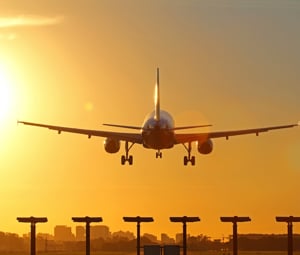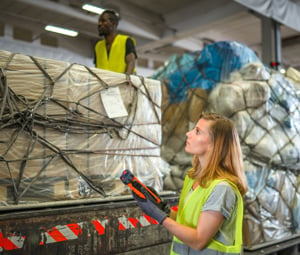Search all reports
Browse through the IATA Economics report library.
496 reports found
A historic election year in 2024 spells elevated policy risk
2024 will be a historic year in terms of national elections around the world. More than 70 countries will go to the polls, involving 4.2 billion people, and hence a majority of the world’s population for the first time ever.
- Chart of the Week
Regional financial performance recovering, but still varied
Long-term airline profitability shows that while the industry is exposed to external shocks, it typically returns to profitability relatively quickly.
- Chart of the Week
Airline revenue to surpass pre-pandemic levels in 2023
Following a better-than-expected performance, total airline revenue in 2023 is estimated to have recovered to around 107% of the pre-Covid level.
- Chart of the Week
Sustainable Aviation Fuel offtake commitments rise in Q3
There are multiple roadmaps which detail possible pathways for the air transport industry to achieve its Net Zero carbon emissions goal by 2050. They all have one element in common: the reliance on Sustainable Aviation Fuel (SAF) to achieve this ambitious target
- Chart of the Week
The strong air passenger recovery continues in Q3 2023
The September quarter (Q3) saw a continuation of the strong passenger traffic recovery. Industry-wide revenue passenger-kilometers (RPKs) rose by 28.4% compared to Q3 2022, bringing overall passenger traffic to just 3.7% below its 2019 level. This recovery was driven predominantly by resilient domestic markets.
- Chart of the Week
Airline market share profiles vary across regions
As the airline industry recovers to pre-pandemic activity levels this year, understanding how airlines are positioned for efficiency and growth is paramount.
- Chart of the Week
Green energy funds underperform the oil and gas sector
While the global demand for clean and renewable energy sources is growing, the performance of the funds that invest in them has been lagging the conventional energy sector, which is dominated by oil and gas companies.
- Chart of the Week
Airline balance sheets remain impacted by the pandemic
The debt-to-equity ratio is a solvency ratio providing insight into an organization’s reliance on debt to finance its activities. How high this ratio can be before it becomes a solvency concern depends on multiple factors including, notably, revenue.
- Chart of the Week
In Asia the recovery is being strongly led by the central region
An analysis of the 2023 and 2019 H1 seat availability and passenger (pax) volumes shows that Central Asian countries are leading the recovery in Asia
- Chart of the Week
Strong global labor market is both good and bad for airlines
World Bank data show that global unemployment rates (solid lines on the chart above) have been decreasing steadily since the spike that accompanied the Covid-19 crisis and are now below their pre-pandemic levels.
- Chart of the Week



